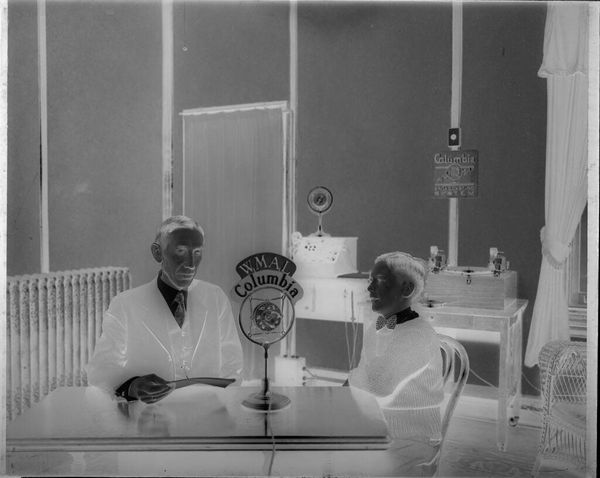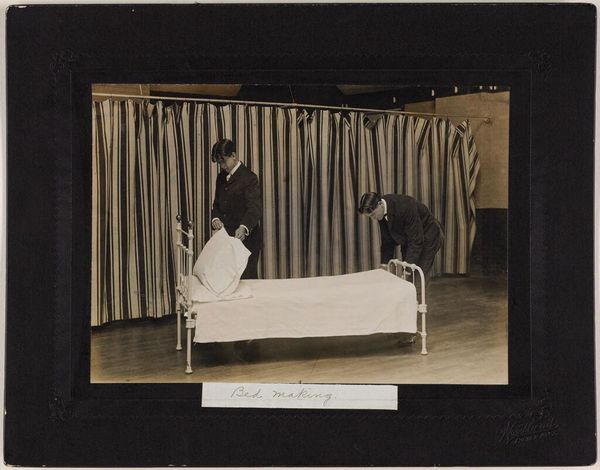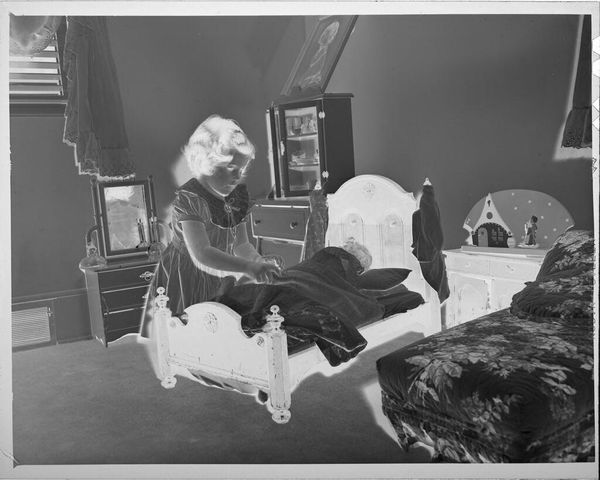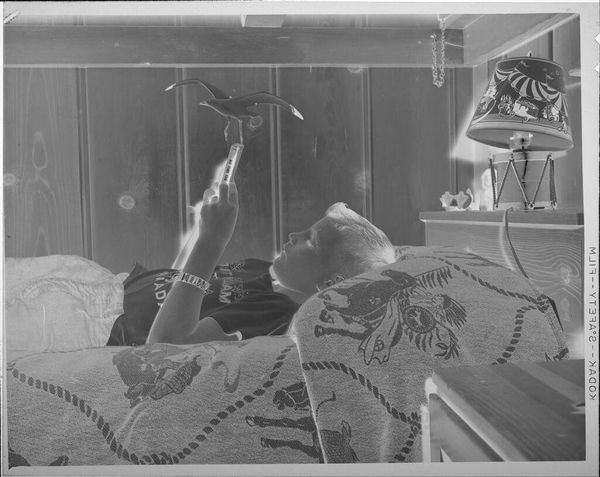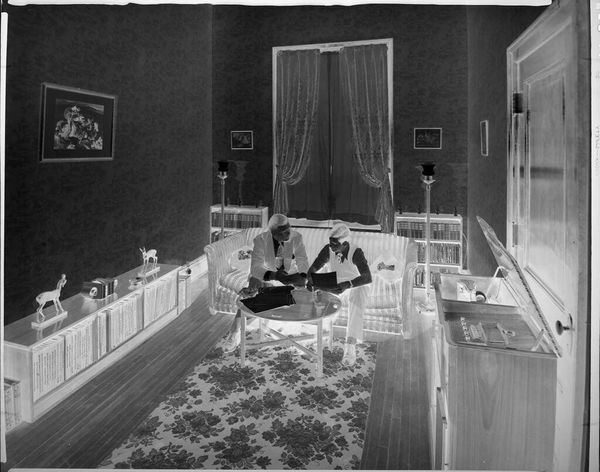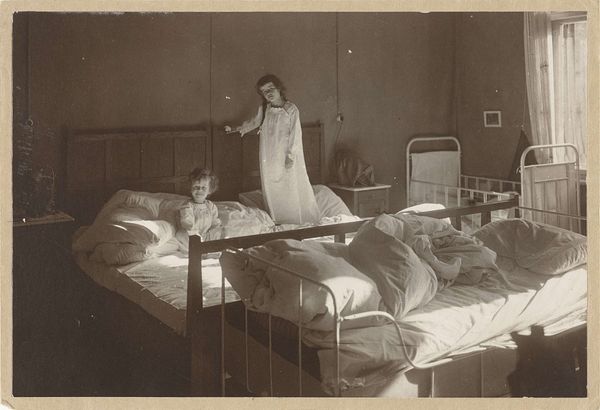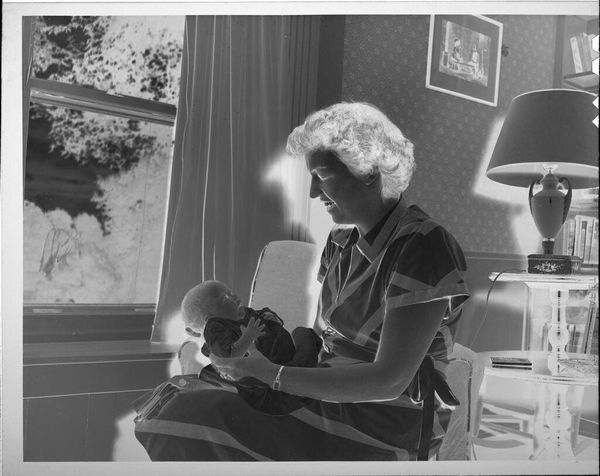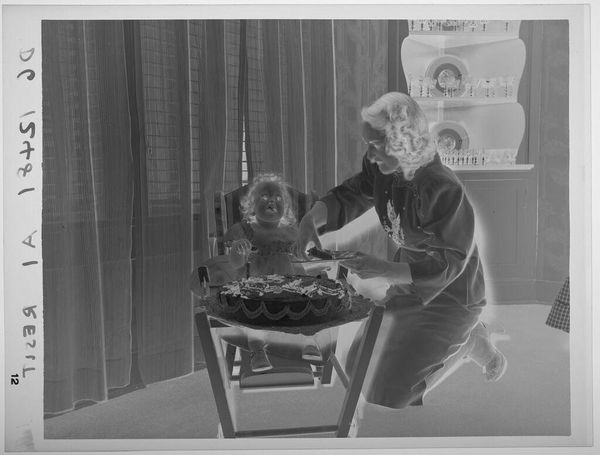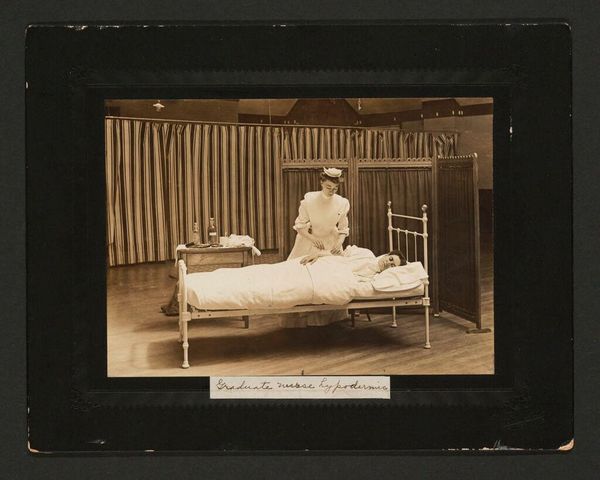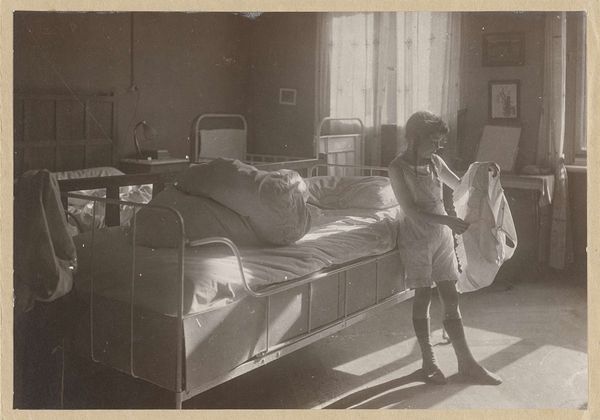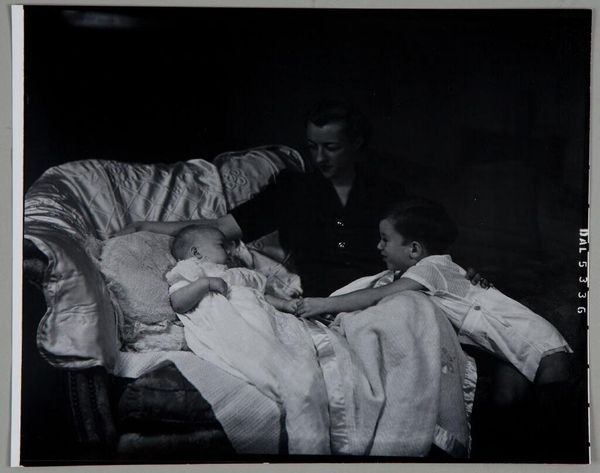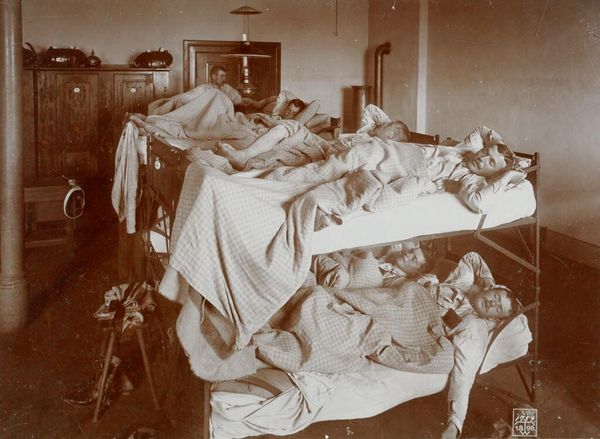
photography, gelatin-silver-print
#
portrait
#
black and white photography
#
photography
#
black and white
#
gelatin-silver-print
#
monochrome photography
#
monochrome
#
realism
#
monochrome
Dimensions: image: 80.01 × 80.01 cm (31 1/2 × 31 1/2 in.) sheet: 108.59 × 101.6 cm (42 3/4 × 40 in.)
Copyright: National Gallery of Art: CC0 1.0
Curator: Rosalind Solomon’s “New York,” taken in 1987, is a gelatin-silver print—stark, almost painfully direct. My immediate reaction is one of quiet solemnity; it seems like such an intimate and vulnerable moment. Editor: I'm struck by the artist's decision to use black and white, it flattens the space while somehow intensifying the image’s raw emotionality. We can clearly discern the tonal range produced by the choice of photographic materials here—how the textures play against each other from the man’s patterned hospital gown, to the contrast with the geometric pattern of the tiled floor. Curator: This photograph gains considerable power, knowing Solomon’s broader project chronicled societal issues and challenged conventional portraiture. This was during the AIDS crisis; to show someone so visibly unwell forces us to confront the realities often marginalized in public discourse. Editor: Absolutely, we should consider how galleries and museums play a role in either exhibiting or neglecting works like these. By displaying images of vulnerable subjects, is Solomon critiquing institutional responses, particularly within a socio-political climate often marked by indifference? We can look closely at the formal elements—the IV drip, the disheveled bed, all staged within this very confined space. The visual grammar screams "hospital." Curator: Note also the technical craft involved, and its availability; the access to photography during this time wasn’t just about artistry. What means of survival, social commentary and bearing witness, can we glean through the act of taking a picture in this time? These mass produced gelatin-silver-prints challenge the perception of high art by portraying a rather low moment. Editor: These issues also extend to the subject. We're looking at the convergence of illness and identity, which directly challenges established museum practice during that period. This goes far beyond an aesthetic choice, prompting vital dialogue concerning imagery politics. Curator: Precisely. It transcends individual representation to engage structural visibility problems. Editor: Ultimately, seeing the process helps solidify understanding this moving work of resistance, and gives pause to the ways these political factors help the portrait become far greater than simply that.
Comments
No comments
Be the first to comment and join the conversation on the ultimate creative platform.
